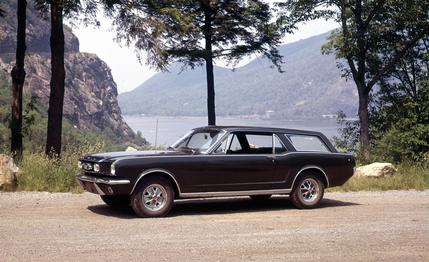 Archived Road Test
Archived Road Test
Barney Clark is a talented, well-paid writer who would prefer to be an automotive designer, or an architect, or an ill-tempered mystic, or almost anything other than what he's doing at any particular moment. His life is a curious blend of Enlightened Victorian, Big-Time Ad Agency Vice President, and Deadly Enemy of Practically Everybody. His love is jealously hoarded for a handful of old friends, his family, every car he ever owned, and fighting the system. Barney Clark is a one-man Berkeley Student Revolution trying to set a world record for the quarter-mile in a flathead Morris Minor.
He has always been a car nut of some stature, and be has always managed to hang out with a pretty good automotive crowd. He can say that he knew Denise McCluggage before she'd even seen her first automotive competition; that he knew Phil Hill when Phil Hill was yet to buy his first Ferrari; and that he has dirtied his hands on the insides of some of the best cars that ever ran on courses with names like Golden Gate Park, Pebble Beach, and Torrey Pines.
It was only natural then that an enthusiast of this magnitude should have decided to build himself a dream car. We've all decided that at one time or another, right? If Enzo Ferrari, Carroll Shelby, Ettore Bugatti, W. O. Bentley and Henry Ford can do it, we can do it! We are undeterred by the fact that people like Jack Griffith, Preston Tucker, Henry Kaiser, Briggs Cunningham, Mad Man Muntz and Sterling Edwards have tried and failed. Barney Clark had the vision, the enthusiasm, the money, and the friends to help him—he would, by God, build an automobile!
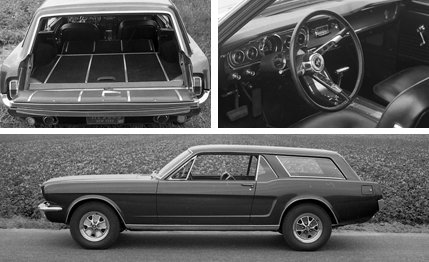
The main collaborator in this scheme was Bob Cumberford, the young designer who has written several pieces for this magazine, and who is receiving more and more notice from the world's automotive Establishment. Clark and Cumberford shared the belief that the special character of the "personal car" was applicable to a broader range of vehicle types than was generally acknowledged. They both appreciated the charm and usefulness of the original Chevrolet Nomad—a more-or-less compact two-door station wagon of the mid-Fifties—and they had spent long, happy hours reflecting on the possibilities of Ford 's super-successful Mustang applied to a wagon of the Nomad genre. Barney Clark had in fact put together a hot station wagon in the late Fifties, using a deceptively dull-looking '55 Chevy wagon with Corvette-type engine and suspension modifications (Barney's Chevy led us to build up the C/D Plymouth "Boss Wagon").
Their random thoughts on the subject became a plan, and Cumberford transferred the whole notion to paper. The basis for the design was a 1964 Mustang coupe, with the 260 hp, 289 cu.in. V-8 engine, and automatic transmission. Clark, Cumberford, and an enthusiast-associate of Cumberford's named Jim Licata shared equally in the financial arrangements, and the car was shipped to Italy for its metamorphosis.
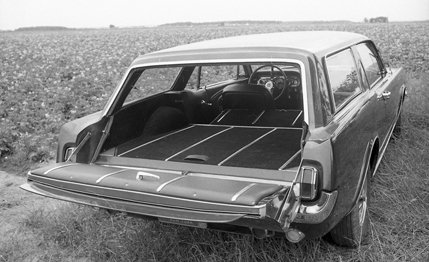
Cumberford was already working with Frank Reisner of Intermeccanica in Turin, on the Griffith GT project (C/D, July '66) and Reisner was given the responsibility for executing Cumberford's design. His Intermeccanica workmen removed the stock roof and rear deck, and fabricated a new roof, tailgate, rear windows, cargo floor, and folding rear seat. The Mustang has a fully disappearing tailgate window, and the owners had hoped to redesign the gas tank and spare tire location with an eye to lowering the cargo floor and increasing the available load space, but the money ran out. This feature will probably appear on future models. Aside from this small item, things worked out just about the way everybody had hoped they would—a rare occurrence in ventures of this kind. The car went to Italy in March, 1965, and Reisner returned it to New York this February.
It now has a combination of '66 and '67 Mustang GT exterior trim, and they've added Koni shock absorbers, Ford 's optional mag-type wheels, and big, fat Pirelli Cinturato (radial-ply) tires to improve its handling and braking performance. It is a very impressive car by any standard of measurement, and the furor it creates on the street certainly seems to bear out its owners' belief in the compact station wagon concept. We drove it over a thousand miles, and people actually waved us to the side of the road to ask us about it.
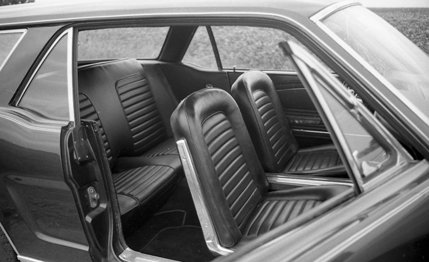
In performance, the Mustang wagon is like any well-prepared, properly-suspended Mustang—maybe slightly better in handling and directional stability, slightly down on acceleration and throttle response (mostly due to the automatic box). It works well as a station wagon too, but the driver would never notice its added bulk. The overall dimensions have remained the same, and Cumberford's design has lost none of the distinctive Mustang flavor. The cargo area measures about 44 in. wide and 36 in. deep with the rear seat down for a volume of 27-and 50-cu. ft. respectively.
Clark and Cumberford would like to build Mustang wagons as a commercial venture. The public response to their car has been spectacular, and they believe that they could build it reasonably enough to sell in this country at an attractive price. Although Ford has shown no official interest in the project, there are pretty good indications that GM is exploring the concept for both their Chevrolet/Pontiac Mustang-challenger and their more expensive Toronado/Riviera-class cars.
In fact, some poor GM type who knew of his company's top-secret experiments in this area got the shock of his life one morning when he saw Barney's fully-appointed, apparently-production, '66 Mustang wagon whizzing along Detroit's Southfield Expressway. Within an hour telephones were ringing all over the Motor City as various firms' intelligence agents tried to ferret out the truth about this latest bombshell from Dearborn. As far as Barney was concerned, that alone was worth the time, trouble, and expense. His enemies were confounded.
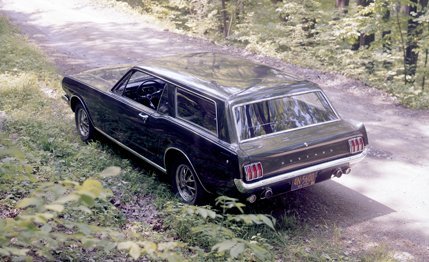
We were delighted by our experience with the Clark-Cumberford wagon. The craftsmanship is beautiful. Even C/D's most reliable nitpickers came away with a lot of affection for the car. The country's automotive mood seems to be just right for highly specialized vehicles. Brooks Stevens is doing very well with his anachronistic Excalibur SS, Carroll Shelby is selling Cobras and GT-350s like they were going out of style, and John Fitch and Don Yenko are doing very well with their custom Corvairs. We'd bet that the irascible Mr. Clark could sell quite a few of their Mustang wagons. If you are interested in such a car, write Cumberford/Clark Inc., 322 E. 30 St., New York, N.Y. 10016.
While our two heroes continue to puzzle over the problem of getting their Mustang station wagon project off the ground, they're wasting no time. Cumberford is designing a new race car for Buck Fulp, and laboring to salvage the ill-fated Griffith GT project. Barney Clark, as this is being written, is celebrating his survival of a very serious heart attack. The world—automotive and otherwise—should look to its defenses, because every minute Clark spends scheming in his hospital bed is going to cost the squares dearly. He might just lose his temper and sell every cottonpicking one of us a Mustang station wagon.